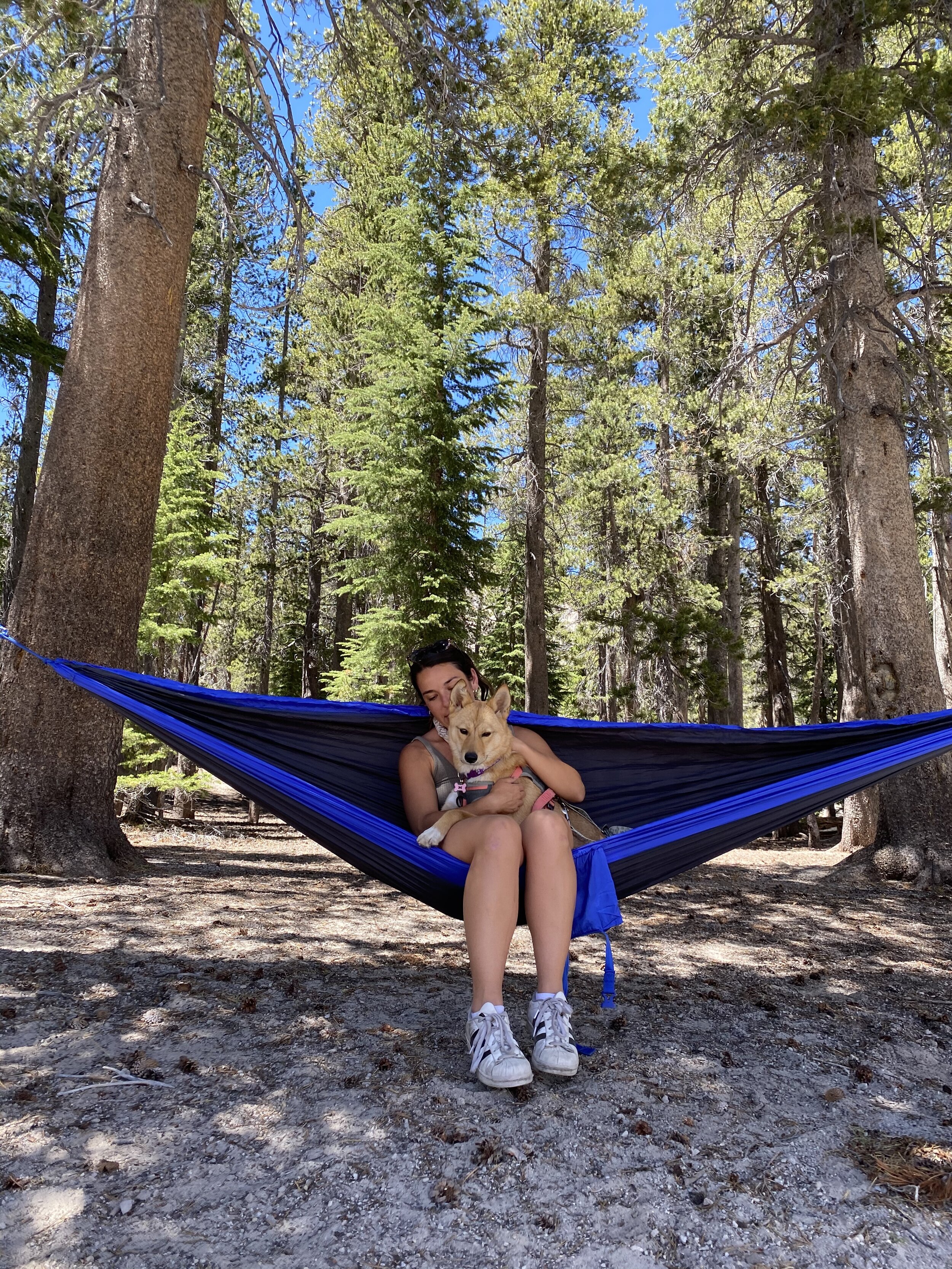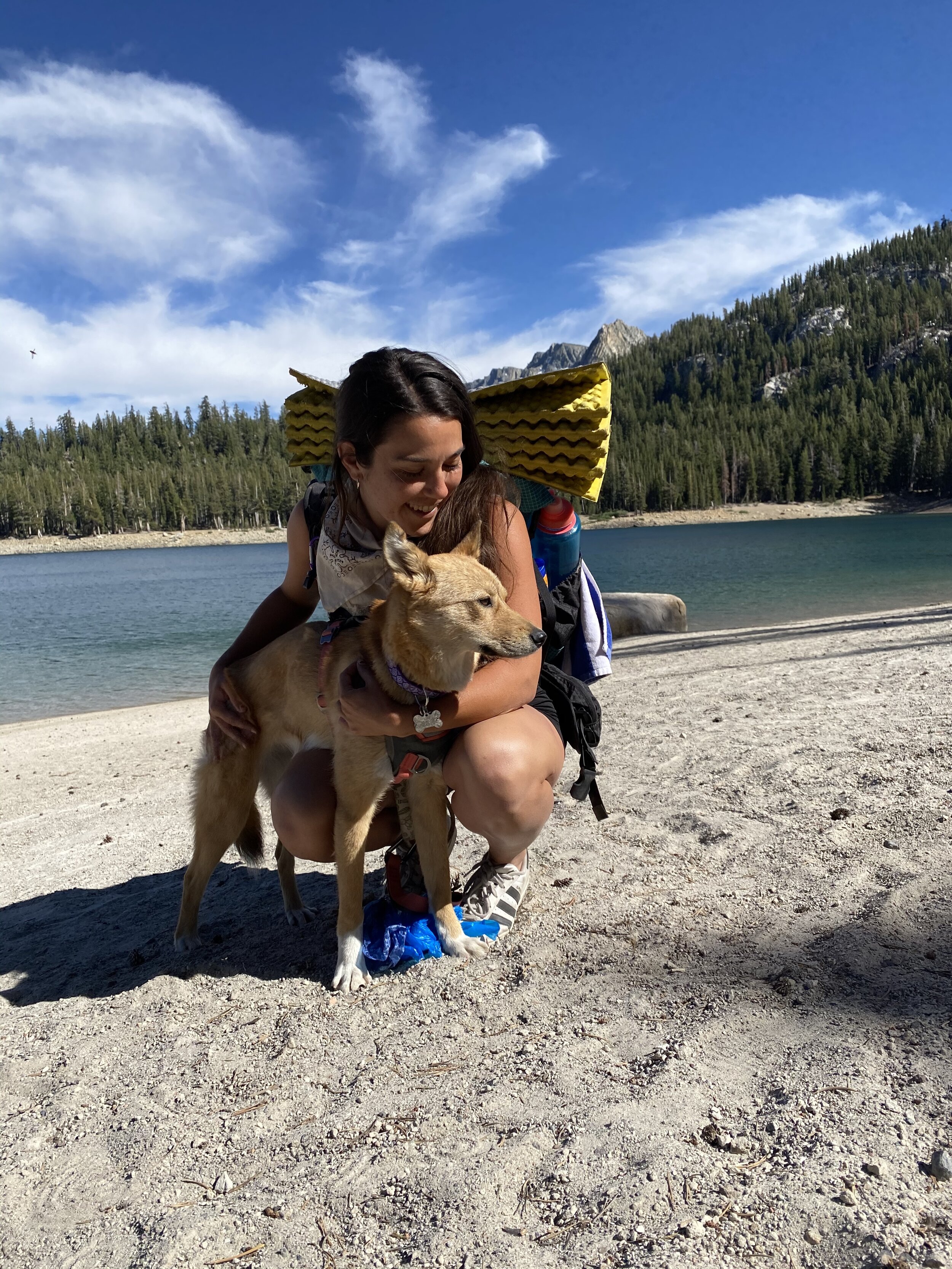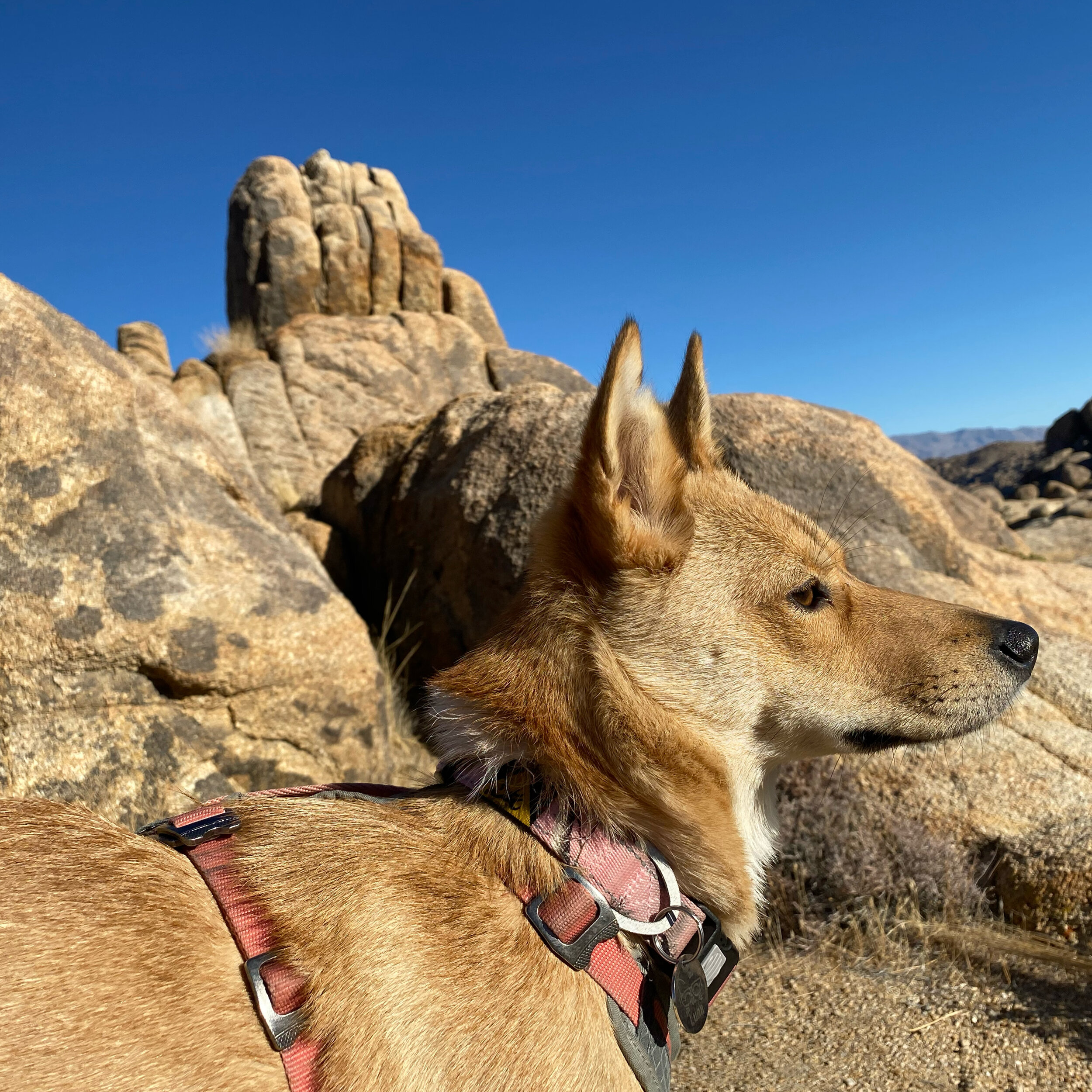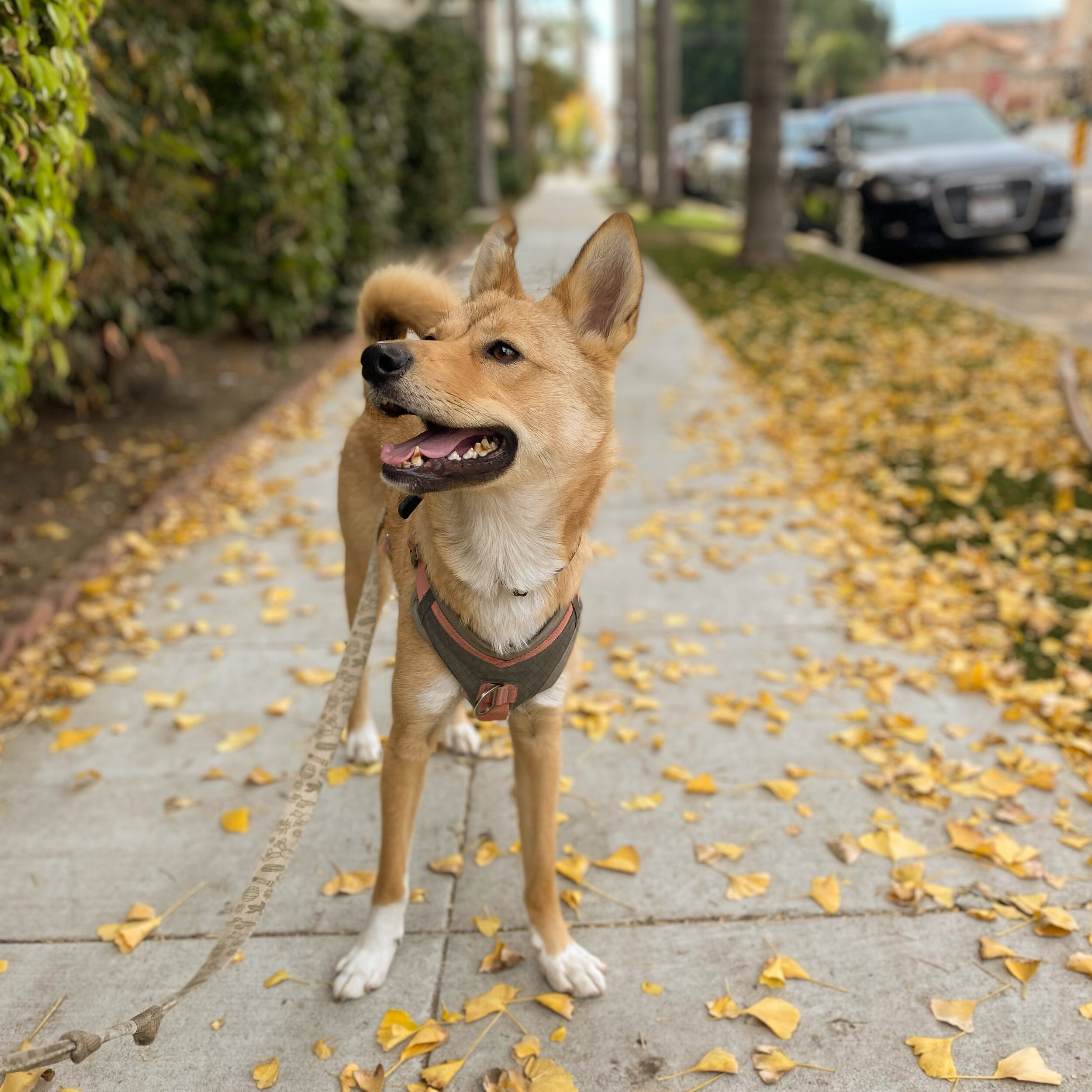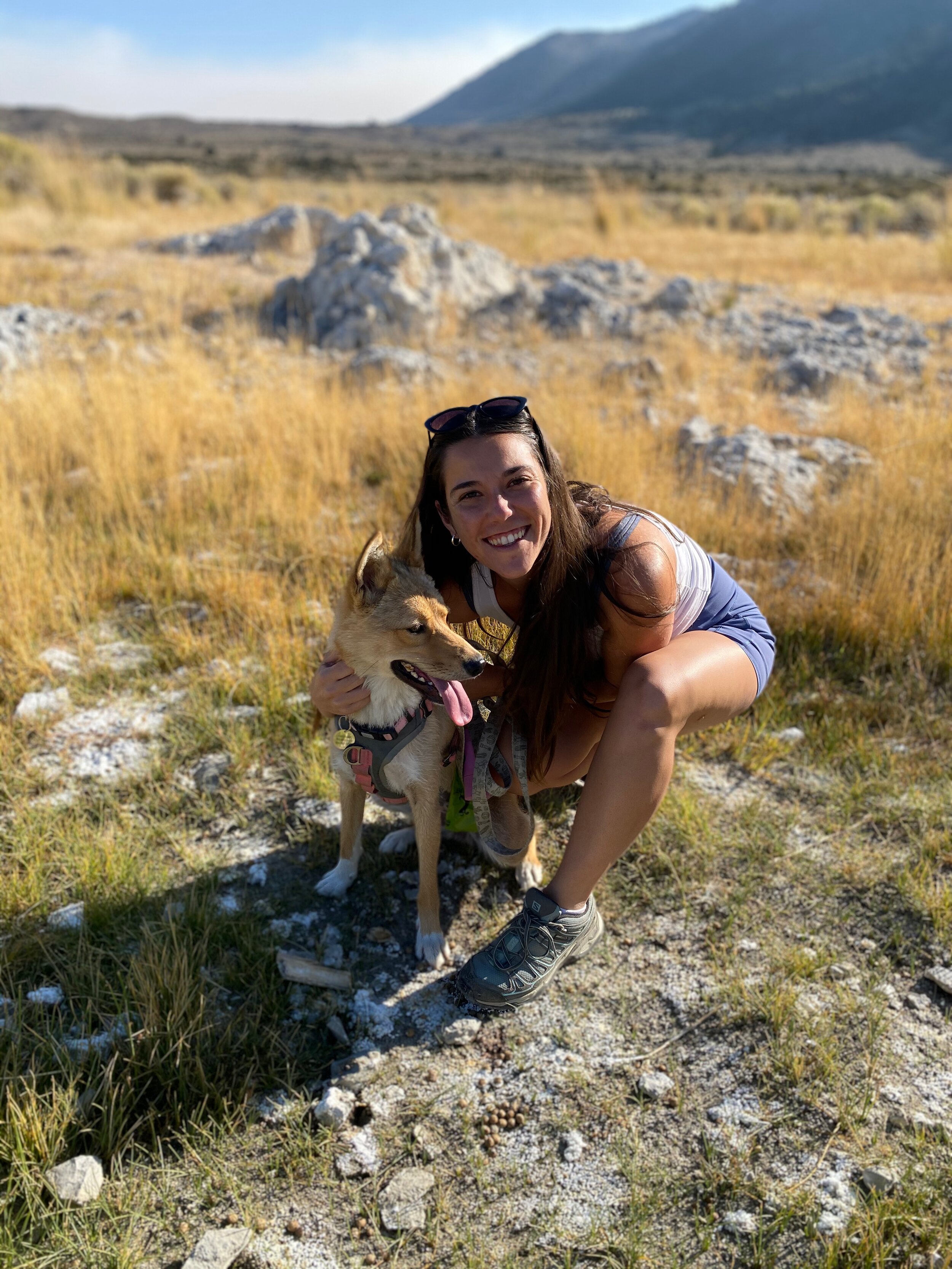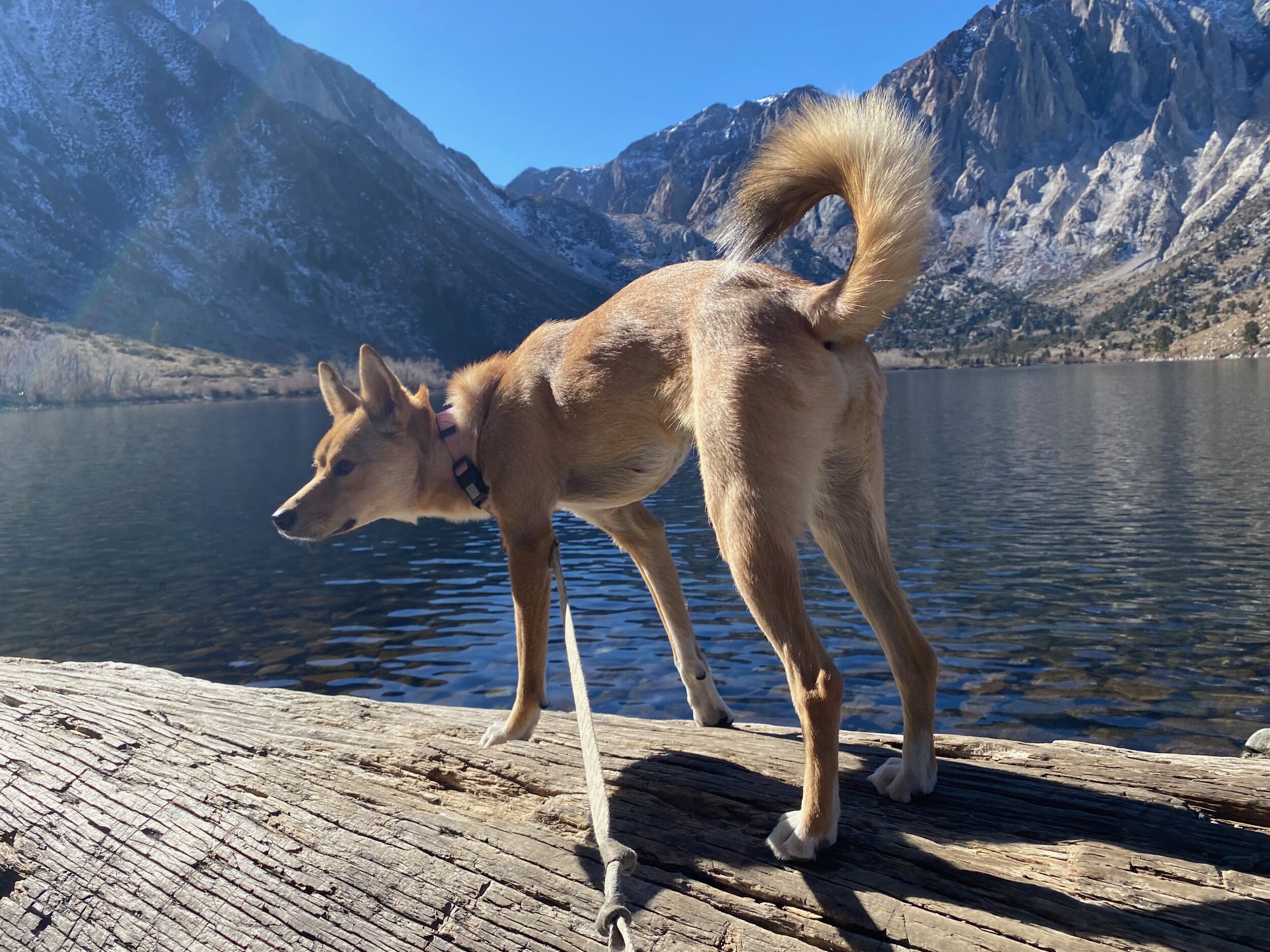Tips and Tricks for Adventuring with a Dog
When I first started looking to adopt a dog, I had one thing in mind: I wanted a dog that would hike, camp, and could eventually backpack with me.
One day as I was scrolling through Instagram, I saw a post from my hiking friend Susie about a dog that had been rescued from a meat market in Korea and was up for adoption.
I immediately fell in love with the pictures of her— she was hiking, at the beach, and genuinely seemed like the cutest adventure dog.
As we started getting out on adventures together, I realized I had a lot of questions on what gear she needed, where we could go, and what I needed to do to ensure she was having fun and staying safe.
In this blog you’ll find information on:
Taking your dog to a vet before your long hike
Commands your dog should know before hitting the trails
Resources for finding dog friendly places
Before taking your dog on a long hike or backpacking trip…
Take your dog to the vet!
Make sure your dog is old enough to be hiking long distances.
Their bones are usually fully developed around the year old mark, but is dependent upon breed and size of the dog.Check what specific vaccinations or preventative medicines your dog should be taking.
Your vet will have all the answers and specifics you need to know before taking your dog out in the wilderness. Your dog should be vaccinated for: Distemper, Parvovirus, Rabies, Leptospirosis, and Lyme disease. These are diseases present in the wild animal and insect populations that your dog may come in contact with while hiking.Keep your dog updated on heart-worm medications. You can use a natural insect repellant to help protect them from mosquitos, which can carry heart-worm disease.
Ask your vet specific questions about how your dog will be able to handle long distance hikes, altitude, heat, and more.
Chat with them about where you intend to go hiking and how long of hikes you’d like to take your dog on. Your vet will likely recommend training— starting small and working your way up to bigger hikes and higher elevation.
Consider getting your dog microchipped
Having clear to read and accurate information on your dogs tag is necessary, but you might want to step up your ability to find them if they were to get lost by having them microchipped.
Commands Your Dog Should Know
Here/Come
If you’re going to be letting your dog off leash at all, they need to have VERY strong recall. This should be taught, and practiced consistently. Before we hike or settle into a campground, I make sure to practice Luna’s recall several times and give her treats she really likes to ensure she remembers that I’m worth coming back to.
Stay
This is an important command for keeping your dog under control on and off the trails.
Leave it
Whether it’s another dog or a plant your dog is going after, this command is necessary for keeping control of your dog on the trails.
Sit
Another command that’s important for keeping control over your dog.
Gear You Should Always Have for a Hike With Your Dog
Leash
You don’t have to get a special leash to hike with your dog. However, I would recommend checking out hands-free leash options. I recently got this one for Luna and have loved it so far.
Pay attention to leash laws. While some places allow dogs off leash under voice control, a lot of places require a 6 foot or shorter, non-retractable leash.
Harness
Make sure you have accurate and updated information on your dogs collar including your name and a phone number you can be reached. I love this harness by Kurgo.
Water container and extra water
As a general rule, your dog needs 1 ounce of water per pound of body weight per day. On a hike, this amount should be doubled.
Luna weighs about 25 pounds, so I make sure to have two extra liters of water for her. We use collapsible hiking bowls.
High reward snacks
Some of our favorites are: peanut butter, carrots, and dog treats.
I also make sure to have one snack that occupies her for a while to eat while I’m sitting and eating my own lunch— typically a Bully stick.
Extra poop bags
Just as human waste needs to be packed out or buried, so does your dogs. Also, please don’t leave your dog baggies on the trail to pick up later— even if it’s a loop.
Dog first aid items
I love this first aid kit by Adventure Medical kits. Contents are suitable for a wide variety of incidences such as Wound Care, Sprain & Strain Care, Tick Removal and much more.
Safety light
A safety light or light up collar is an important thing to carry, just in case you end up in the dark with your dog. This helps keep visibility on your dog at all times. We use this one.
Resting Pad
When we hike long distances I like to bring a pad for Luna to lay down on and relax a little. It also serves as her “place” if I need to recall her while we’re just hanging out. I alternate between bringing her Chuck It travel bed or using my Therm-a-rest Z Lite pad.
Gear You Should Keep in Your Car
Kurgo seat covers
If you’re planning to adventure with your dog a lot, I’d highly recommend purchasing these Kurgo seat covers. These waterproof and stain resistant seat covers are vital to keeping my car seats like new.
Brush
Having a brush in the car is great to help get dirt off your dog before they get into your car.
Wipes
These wipes are also a great way to clean off your pup before they get back into your car.
How To Find Dog Friendly Places
Most national parks don’t allow dogs on their trails. However, many national forests, state parks, and BLM allow dogs. Most of these places have a 6-ft on leash requirement.
Here’s a list of websites and apps that are helpful for finding dog friendly trails and adventures:
AllTrails, dog friendly filter
The Facebook group, Hiking With Dogs
Literally google a general place + dog friendly hikes




